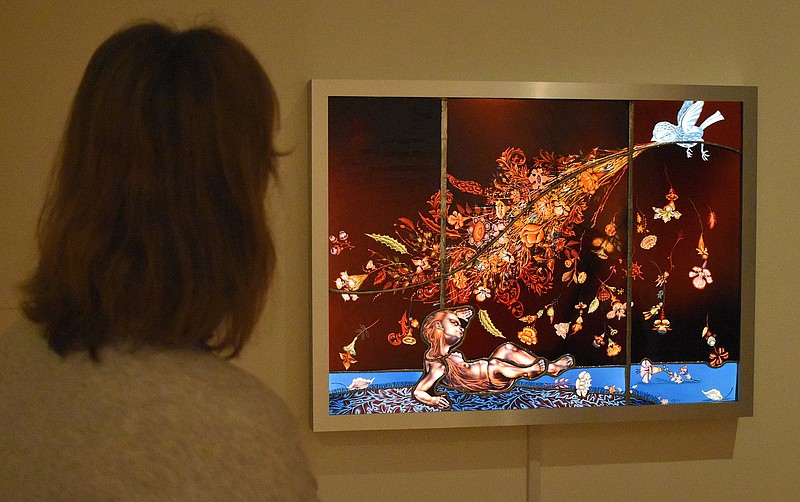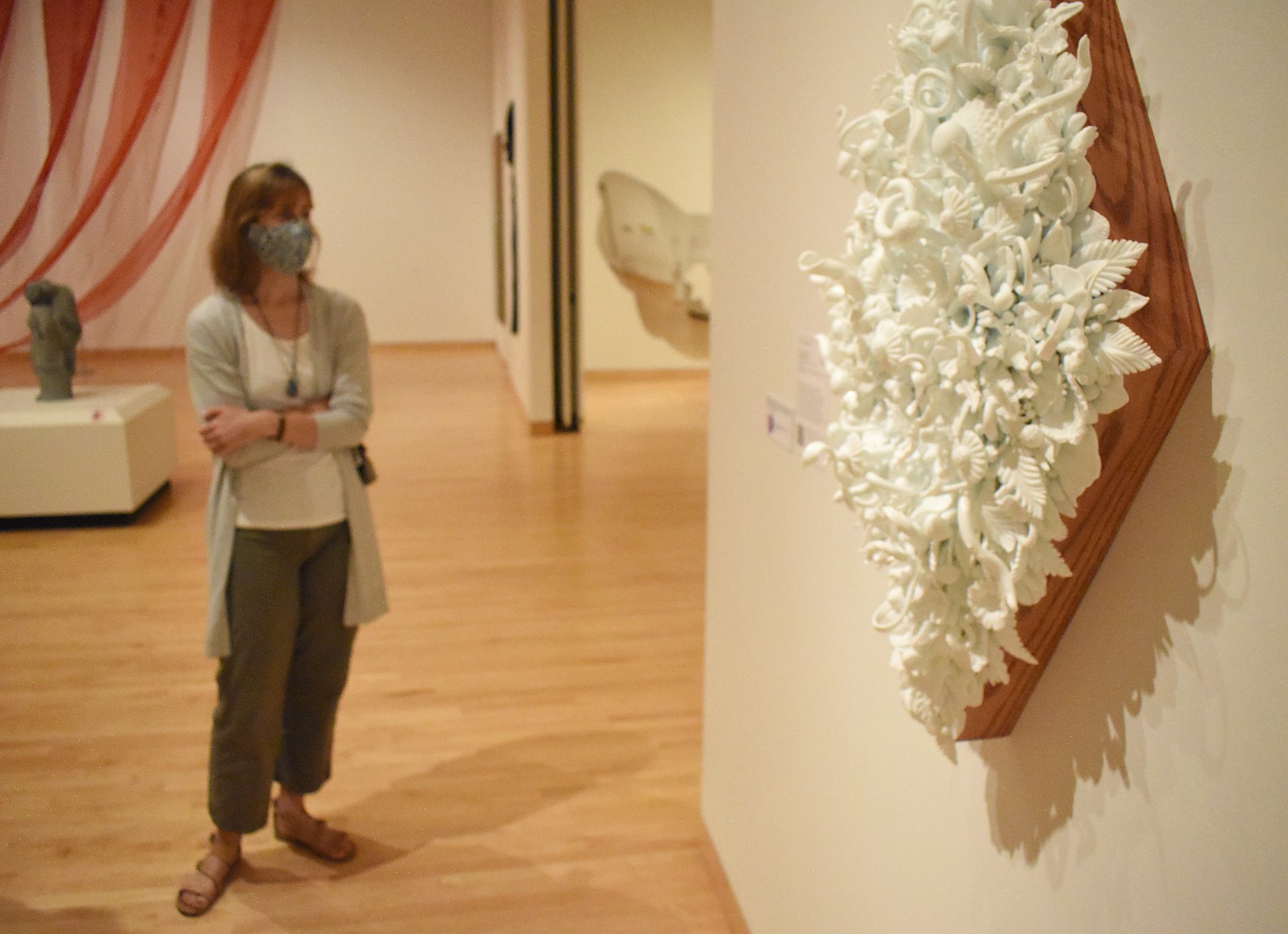As chief curator of the Hunter Museum of American Art, Nandini Makrandi likes to plan about three years ahead for the rotating exhibits. With more than 3,000 pieces of art in the permanent collection, she has plenty to choose from.
When talks began about possible themes for the 2020 summer and fall exhibit, she originally thought of focusing on female artists, in particular artists who had worked in fabrics and textiles. Tasks such as laundry, folding clothes and sewing were long considered women's work, she said, so when female artists began presenting textiles as pieces of art, "they were not originally taken seriously."
The pieces also have not been displayed very often, Makrandi said because they are either fragile or very large.
As she delved into the Hunter's collection, she realized there were more relevant pieces by women than she originally thought. After further discussion with staff, it was decided to focus on the 100-year anniversary of the women's suffrage movement and the fight for the right to vote. The result is "The F Word: We Mean Female," a collection of about 30 pieces purchased by the museum over the last nearly 40 years.
It will be on display through the first of the year.
"We wanted to celebrate all of that and the role the Hunter has had over the years," she said.
If you go
› What: “The F Word: We Mean Female” art exhibit› Where: Hunter Museum of American Art, 10 Bluff View› When: Through Jan. 10› Hours: 10 a.m.-5 p.m. Monday, Friday, Saturday; 10 a.m.-8 p.m. Thursday; noon-5 p.m. Sunday› Admission: $20 general, $18 seniors, free for under 17› Phone: 423-267-0968› Online: huntermuseum.org
One of the first things people will see upon entering the gallery is "Rise" by Lesley Dill, which measures 50 feet across and 17 feet high. It features a seated figure that is about 5 feet tall. From her back flow 11 large banners featuring words and phrases taken from interviews Dill did with people who had had visions.
Everything is bright red, which along with its size, "takes your breath away," Makrandi said. The piece was inspired by a trip to India by the artist.
Other pieces include large paintings, painted glass, multimedia, found objects and a silhouette book by Kara Elizabeth Walker called "Freedom: A Fable (A Curious Interpretation of the Wit of a Negress in Troubled Times With Illustrations).
Many of the pieces are powerful on their own. As a collection, they are stunning for their complexity, diversity and skill.
"I think you could examine this collection during an entire visit just for the technical aspects of the works," said director of marketing and communications Cara McGowan.
"The level of skill is amazing, and they are so different," she said.
Makrandi said she hadn't really seen the collection in that light, but agrees.
"A lot of these women were pushing boundaries whether it was the subject matter or the process," she said. "Several were doing very unusual things."
A piece by Judith Schaechter called "Efflorescence," for example, is a stained-glass work made by sandblasting, engraving, filing, painting and layering.
Contact Barry Courter at bcourter@timesfreepress.com or 423-757-6354.

